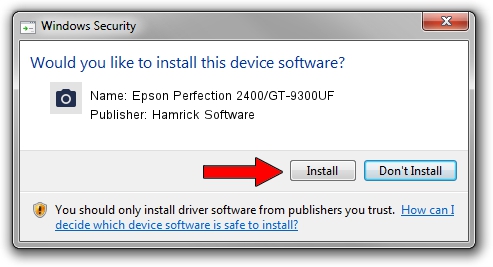If you are installing USB drivers: You do not need to download USB device class drivers. They are installed automatically. These drivers and their installation files are included in Windows. They are available in the WindowsSystem32DriverStoreFileRepository folder.
- Brother drivers allow your Brother printer, label maker, or sewing machine to talk directly with your device. This allows the machinery to understand data sent from a device (such as a picture you want to print or a document you want to scan), and perform the necessary actions.
- Go to Device Manager (right click on My Computer, choose Manage and then find Device Manager in the left panel), or right click on Start Menu for Windows 10 and select Device Manager 3. Right click on the hardware device you wish to update and choose Update Driver Software.
- Download USB Mass Storage Device for Windows to uSB driver.
- Drivers Usb free download - Drivers For Free, CopyTrans Drivers Installer, Adaptec ASPI Drivers, and many more programs.
Versions supported
- Windows 10
- Windows 8.1
Applies to
- Device manufacturers of CDC Control devices
Microsoft-provided in-box driver (Usbser.sys) for your Communications and CDC Control device.
In Windows 10, the driver has been rewritten by using the Kernel-Mode Driver Framework that improves the overall stability of the driver. Staffontime terminal driver download for windows 10 free.
- Improved PnP and power management by the driver (such as, handling surprise removal).
- Added power management features such as USB Selective Suspend.
In addition, UWP applications can now use the APIs provided by the new Windows.Devices.SerialCommunication namespace that allow apps to talk to these devices.
Usbser.sys installation
Load the Microsoft-provided in-box driver (Usbser.sys) for your Communications and CDC Control device.
Note
If you trying to install a USB device class driver included in Windows, you do not need to download the driver. They are installed automatically. If they are not installed automatically, contact the device manufacturer. For the list of USB device class driver included in Windows, see USB device class drivers included in Windows.
Windows 10
In Windows 10, a new INF, Usbser.inf, has been added to %Systemroot%Inf that loads Usbser.sys as the function device object (FDO) in the device stack. If your device belongs to the Communications and CDC Control device class, Usbser.sys is loaded automatically.You do not need to write your own INF to reference the driver. The driver is loaded based on a compatible ID match similar to other USB device class drivers included in Windows.
Vectorsoft Usb Devices Driver Download For Windows 10
USBClass_02
USBClass_02&SubClass_02
- If you want to load Usbser.sys automatically, set the class code to 02 and subclass code to 02 in the Device Descriptor. For more information, see USB communications device class. With this approach, you are not required to distribute INF files for your device because the system uses Usbser.inf.
- If your device specifies class code 02 but a subclass code value other than 02, Usbser.sys does not load automatically. Pnp Manager tries to find a driver. If a suitable driver is not found, the device might not have a driver loaded. In this case, you might have to load your own driver or write an INF that references another in-box driver.
- If your device specifies class and subclass codes to 02, and you want to load another driver instead of Usbser.sys, you have to write an INF that specifies the hardware ID of the device and the driver to install. For examples, look through the INF files included with sample drivers and find devices similar to your device. For information about INF sections, see Overview of INF Files.
Note
Microsoft encourages you to use in-box drivers whenever possible. On mobile editions of Windows, such as Windows 10 Mobile, only drivers that are part of the operating system are loaded. Unlike desktop editions, it is not possible to load a driver through an external driver package. With the new in-box INF, Usbser.sys is automatically loaded if a USB-to-serial device is detected on the mobile device. Xrom usb devices driver download for windows 10 pro.
Windows 8.1 and earlier versions
In Windows 8.1 and earlier versions of the operating system, Usbser.sys is not automatically loaded when a USB-to-serial device is attached to a computer. To load the driver, you need to write an INF that references the modem INF (mdmcpq.inf) by using the Include directive. The directive is required for instantiating the service, copying inbox binaries, and registering a device interface GUID that applications require to find the device and talk to it. That INF specifies 'Usbser' as a lower filter driver in a device stack.
The INF also needs to specify the device setup class as Modem to use mdmcpq.inf. Under the [Version] section of the INF, specify the Modem and the device class GUID. for details, see System-Supplied Device Setup Classes.
For more information, see this KB article.
Configure selective suspend for Usbser.sys
Starting in Windows 10, Usbser.sys supports USB Selective Suspend. It allows the attached USB-to-serial device to enter a low power state when not in use, while the system remains in the S0 state. When communication with the device resumes, the device can leave the Suspend state and resume Working state. The feature is disabled by default and can be enabled and configured by setting the IdleUsbSelectiveSuspendPolicy entry under this registry key:
To configure power management features of Usbser.sys, you can set IdleUsbSelectiveSuspendPolicy to:
'0x00000001': Enters selective suspend when idle, that is, when there are no active data transfers to or from the device.
'0x00000000': Enters selective suspend only when there are no open handles to the device.

That entry can be added in one of two ways:
Write an INF that references the install INF and add the registry entry in the HW.AddReg section.
Describe the registry entry in an extended properties OS feature descriptor. Add a custom property section that sets the bPropertyName field to a Unicode string, 'IdleUsbSelectiveSuspendPolicy' and wPropertyNameLength to 62 bytes. Set the bPropertyData field to '0x00000001' or '0x00000000'. The property values are stored as little-endian 32-bit integers.
For more information, see Microsoft OS Descriptors.

Develop Windows applications for a USB CDC device
If you install Usbser.sys for the USB CDC device, here are the application programming model options:
Vectorsoft Usb Devices Driver Download For Windows 8.1
Starting in Windows 10, a Windows app can send requests to Usbser.sys by using the Windows.Devices.SerialCommunication namespace. It defines Windows Runtime classes that can use to communicate with a USB CDC device through a serial port or some abstraction of a serial port. The classes provide functionality to discover such serial device, read and write data, and control serial-specific properties for flow control, such as setting baud rate, signal states.
In Windows 8.1 and earlier versions, you can write a Windows desktop application that opens a virtual COM port and communicates with the device. For more information, see:
Win32 programming model:
.NET framework programming model:
Related topics
-->This topics in this section describe the class drivers, generic client driver, and the parent composite driver that are provided by Microsoft.
Microsoft-provided USB drivers for controllers and hubs
Microsoft provides these set of drivers:
- For USB host controllers and hubs. For more information, see USB host-side drivers in Windows. You can develop a custom host controller driver that communicates with the USB host controller extension (UCX) driver. For more information, see Developing Windows drivers for USB host controllers.
- For handling common function logic for USB devices. For more information, see USB device-side drivers in Windows.
- For supporting Type-C connectors. For more information, see USB connector manager class extension (UcmCx).
Other Microsoft-provided USB drivers
| Device setup class | Microsoft-provided driver and INF | Windows support | Description |
|---|---|---|---|
| USB | Usbccgp.sys Usb.inf | Windows 8.1 Windows 8 Windows 7 Windows Vista Windows XP | Usbccgp.sys is a parent driver for composite devices that supports multiple functions. For more information, see USB Generic Parent Driver (Usbccgp.sys). |
| Biometric | WudfUsbBID.dll WudfUsbBIDAdvanced.inf | Windows 8.1 Windows 8 | Microsoft supports USB biometric devices (fingerprint readers) by providing the Windows Biometric Framework. See the Windows Biometric Framework. |
| Media Transfer Protocol Devices | Wpdusb.sys (Obsolete) | Windows Server 2008 Windows Vista Windows Server 2003 Windows XP | Note Starting in Windows 7, Microsoft has replaced the kernel mode component of the Windows Vista USB driver stack (Wpdusb.sys) for Windows Portable Devices (WPD) with the generic Winusb.sys. Microsoft provides the Wpdusb.sys driver to manage portable devices that support the Media Transfer Protocol. See WPD Design Guide. |
| USBDevice | Winusb.sys Winusb.inf | Windows 8.1 Windows 8 Windows 7 Windows Vista Windows XP with Service Pack 2 (SP2) | Winusb.sys can be used as the USB device's function driver instead of implementing a driver. See WinUSB. |
Microsoft-provided USB device class drivers
Microsoft provides drivers for several USB device classes approved by USB-IF. These drivers and their installation files are included in Windows. They are available in the WindowsSystem32DriverStoreFileRepository folder.
See, USB device class drivers included in Windows.
Related topics
Vectorsoft Usb Devices Driver Download For Windows 7
Universal Serial Bus (USB)
USB Driver Development Guide
